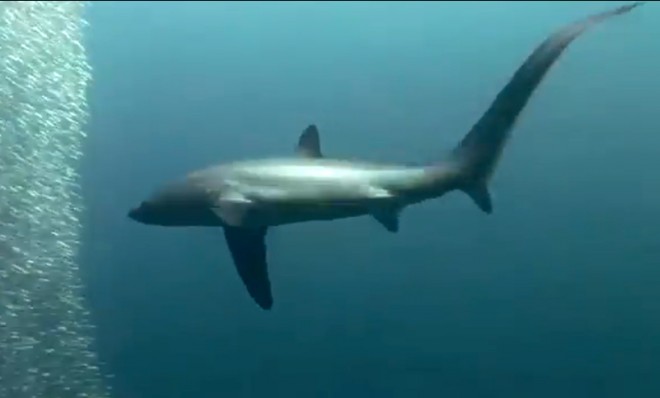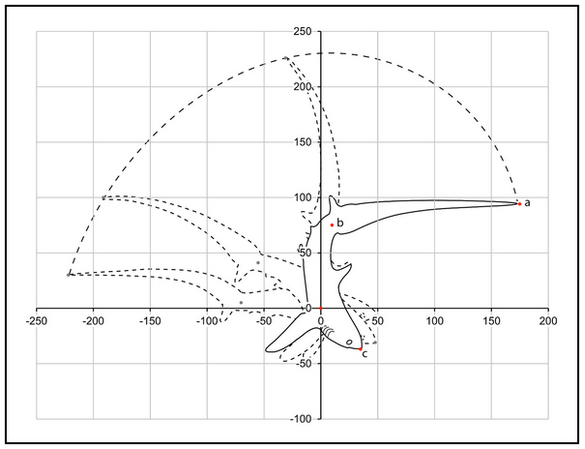WATCH: This shark uses its scythe-like tail as a deadly weapon
Who needs a Sharknado, anyway?

With their rows of razor-sharp and replenishable teeth, as well as hydrodynamic contours that allow them to stealthily lurk assassin-like just below the water's surface, sharks are among Mother Nature's finest killing machines. But new underwater footage reveals that a particular subset called the thresher shark is in possession of an additional deadly weapon: Its tail is equipped with an abnormally long, scythe-like fin that it can whip over its head to violently slash at schools of unsuspecting fish.
Experts have long suspected that thresher sharks use their tails as hunting weapons, but it was never actually seen until 2010, when fishermen witnessed them lash out at some chum. A new study published in PLoS One, however, contains first-time footage of one of the three known species of threshers — specifically Alopias pelagicus, a 10-foot-long predator that isn't normally a threat to humans — swimming hard and fast into dense schools of sardines just off the coast of Philippines, and swinging its rear fin like a morning star.
"This is the holy grail of thresher shark behavioral research," study lead author Simon Oliver, founder of the Thresher Shark Research and Conservation Project, told the Los Angeles Times.
The Week
Escape your echo chamber. Get the facts behind the news, plus analysis from multiple perspectives.

Sign up for The Week's Free Newsletters
From our morning news briefing to a weekly Good News Newsletter, get the best of The Week delivered directly to your inbox.
From our morning news briefing to a weekly Good News Newsletter, get the best of The Week delivered directly to your inbox.
Using underwater cameras, researchers captured 25 separate instances of 22 thresher sharks attacking sardines with their tails. "The interesting thing about it was that these tail slaps were only successful about 60 percent of the time," said Dr. Oliver, "but when they were successful they managed to kill more than one prey item. So it seems the strategy is efficient in that the shark is able to consume more than one fish at a time to balance out the times when it wasn't successful."

(Diagram via PLoS One)
The sharks, in fact, may be able to send shock waves with their tail-whips, although Oliver conceded this will have to be studied further. Nonetheless, the predators are a shining example of weaponized physiology, wrote National Geographic's Ed Yong:
The thresher accelerates towards a ball of fish and brakes sharply by twisting its large pectoral fins. It lowers its snout, pitches its whole body forward, and flexes the base of its tail. This slings the tail tip over its head like a trebuchet, with an average speed of 30 miles per hour. (The fastest shark managed to whip its tail at an astonishing top speed of 80 miles per hour.) [National Geographic]
"It's very violent, very quick, and very dramatic," said Oliver.
A free daily email with the biggest news stories of the day – and the best features from TheWeek.com
-
 Will Trump’s $12 billion bailout solve the farm crisis?
Will Trump’s $12 billion bailout solve the farm crisis?Today’s Big Question Agriculture sector says it wants trade, not aid
-
 ‘City leaders must recognize its residents as part of its lifeblood’
‘City leaders must recognize its residents as part of its lifeblood’Instant Opinion Opinion, comment and editorials of the day
-
 10 upcoming albums to stream during the winter chill
10 upcoming albums to stream during the winter chillThe Week Recommends As the calendar turns to 2026, check out some new music from your favorite artists